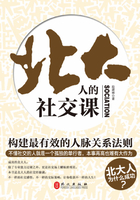The story about King Croesus of Lydia—somewhere around five forty-six b.c.—is a famous account of the paranormal in ancient times.
As the story goes, King Croesus wanted to declare war on one of his neighboring countries.
He wasn't sure though if he could win or not so he sent envoys to seven of the greatest oracles in the region and had them ask the same question in all seven countries.
"What is King Croesus doing today?" ("Today," being the hundredth day after each envoy had departed from the King.) Five of the oracles got it wrong. The sixth was close. Only the seventh got it right. He spoke about smelling a tortoise and a lamb cooking in a brass cauldron.
Which was exactly what Croesus was doing that day.
Satisfied, King Croesus asked the seventh oracle what would happen if he invaded the neighboring country.
The oracle told him that he saw the defeat of a great army.
Croesus liked the sound of that and invaded. He should have asked the oracle which army he was talking about.
As it turned out, it was Lydia's.
There is good recorded information about a nun named St. Teresa of Avila.
A Sister Anne of the Incarnation at Segovia gave a deposition under oath in which she described how St. Teresa, after kneeling for about fifteen minutes, was raised up in the air more than two feet. Remaining suspended there for something like a half hour.
Emanuel Swedenborg was a Swedish mystic and philosopher of the seventeenth century.
In his earlier years he was a great inventor, designing devices such as a submarine, a flying machine and an air gun that could fire up to seventy rounds without re-loading.
He also wrote important works on astronomy, anatomy, geology and other sciences.
He was, in addition, psychic.
In his later years, religion became his chief pre-occupation.
His most famous book is the Arcana Coelestia which he believed he'd received in its entirety from the spirit world.
There is an interesting story having to do with Swedenborg and the widow of the Dutch ambassador in Stockholm.
A goldsmith came to see her some time after her husband had died and asked to be paid for a silver service her husband had bought from him.
The wife was sure her husband had already paid the bill but couldn't prove it.
As the amount was considerable, she asked Swedenborg for his help.
He came to her house three days after her request and told her that he'd had a conversation with her late husband.
He said that the bill had been paid and that the receipt for it was in a certain bureau in an upstairs room.
The widow was embarrassed by this because she knew that the bureau had been entirely cleaned out.
Swedenborg told her that the top left hand drawer of the bureau should be removed to reveal a board which, when drawn out, would reveal a secret compartment and the missing receipt as well as some letters.
They went upstairs and found the compartment exactly as Swedenborg had described it. The receipt was there. So were the letters.
Swedenborg also described a fire in Stockholm when he was in Gothenburg, three hundred miles away.
He told a group of fifteen people how a house that belonged to a friend of his was in ashes and that his own house was in danger. About four hours later, he told the group that the fire was out, extinguished only three doors from his house.
This all took place on a Saturday afternoon.
On Sunday, Swedenborg described the fire to the local governor—how it began, how long it had burned and how it had been put out.
On Monday evening, a messenger arrived from Stockholm.
The letters he carried described the fire exactly as Swedenborg had on the previous Saturday and Sunday.
A few years after the philosopher Immanuel Kant had described Swedenborg's clairvoyant powers—(the power to see at a distance), the first official inquiry into paranormal phenomena was conducted in France.
It was designed specifically to investigate the claims of one Anton Mesmer, an Austrian doctor who claimed that he was healing people with a force he called 'animal magnetism.' (Later to be called 'Mesmerism.')
Mesmer's consulting rooms were illuminated most mysteriously, hung with mirrors, heavily perfumed. Soft music played while Mesmer wandered around among his patients, dressed in a violet robe and carrying an iron wand.
The main feature of the room was an apparatus called a baquet, a circular wooden tub filled with water, iron filings and what Mesmer chose to call 'magnetized' water.
Patients sat around the tub, linked together with wet ropes. Iron rods—Mesmer called them 'conductors'—extended from the tub and were placed in contact with the affected parts of each patient.
Up to thirty rods were utilized simultaneously, creating a mild electric current since the tub was like a Leyden jar, a forerunner of the battery.
Mesmer and his assistants would stroke the patients and make strange, ritual-like hand movements over them and Mesmer would touch them with his iron wand.
This, added to the electrical stimulation, would cause the patients to get excited and, usually, end up having convulsions.
Naturally, having that many patients together at one time contributed to a kind of contagious hysteria.
It was no wonder, then, that so many of these people were convinced that they were healed.
Mesmerism also resulted in sleep-like states during which patients demonstrated an ability at paranormal self-diagnosis and, on more than one occasion, telepathy, clairvoyance and prediction.
In the eighteen forties, a surgeon named James Braid experimented with Mesmerism and coined the word 'neuro-hypnosis' which was later shortened to 'hypnosis.'
While not exactly an account of mediumship, it is interesting to note that many of the founders of the United States government were Masons. It has even been suggested that they received aid from some secret organization in Europe which helped to establish the United States for some specific purpose known only to an initiate few.
At any rate, the Great Seal of the United States is the signature of this organization and the unfinished pyramid with the All-Seeing Eye hovering over it, on the other side of the bill, is a symbol of the task to which the United States government was dedicated.
Analysis of the Great Seal reveals a mass of occult and Masonic symbols. The eagle was, as a matter of fact, a phoenix on the original design, with the Great Pyramid of Gizeh on the reverse side. On a colored sketch submitted by William Barton in 1783, an actual phoenix appears sitting on a nest of flames, a symbol of the new rising from the old.
Later, both of these illustrations were altered to what they are today. Benjamin Franklin thought the eagle was unworthy to be chosen as the emblem of a great, progressive nation, saying that it "was not even a bird of good moral character." He suggested the turkey.
The significance of the mystical number thirteen is not limited to the number of the original colonies either. It appears frequently on the Great Seal as well. For instance, the sacred emblem which appears above the head of the eagle contains thirteen stars. The motto E. Pluribus Unum contains thirteen letters. So, too, does the description Annuit Coeptis on the reverse side of the bill. The eagle clutches, in its right talon, a branch bearing thirteen leaves and thirteen berries. And, in its left talon, it carries a sheaf of thirteen arrows. An interesting side-note to this is the fact that the head of the eagle faces away from the arrow of war, toward the branch of peace.
Then too, the face of the now unfinished pyramid, exclusive of the bottom panel with the date on it, consists of seventy-two stones arranged in thirteen rows.
Returning to mediumsbip.
It is generally accepted that the birth of Spiritualism (which was, in time, the origin of modern Parapsychology) took place in the home of Mr. and Mrs. John D. Fox in the year 1848.















